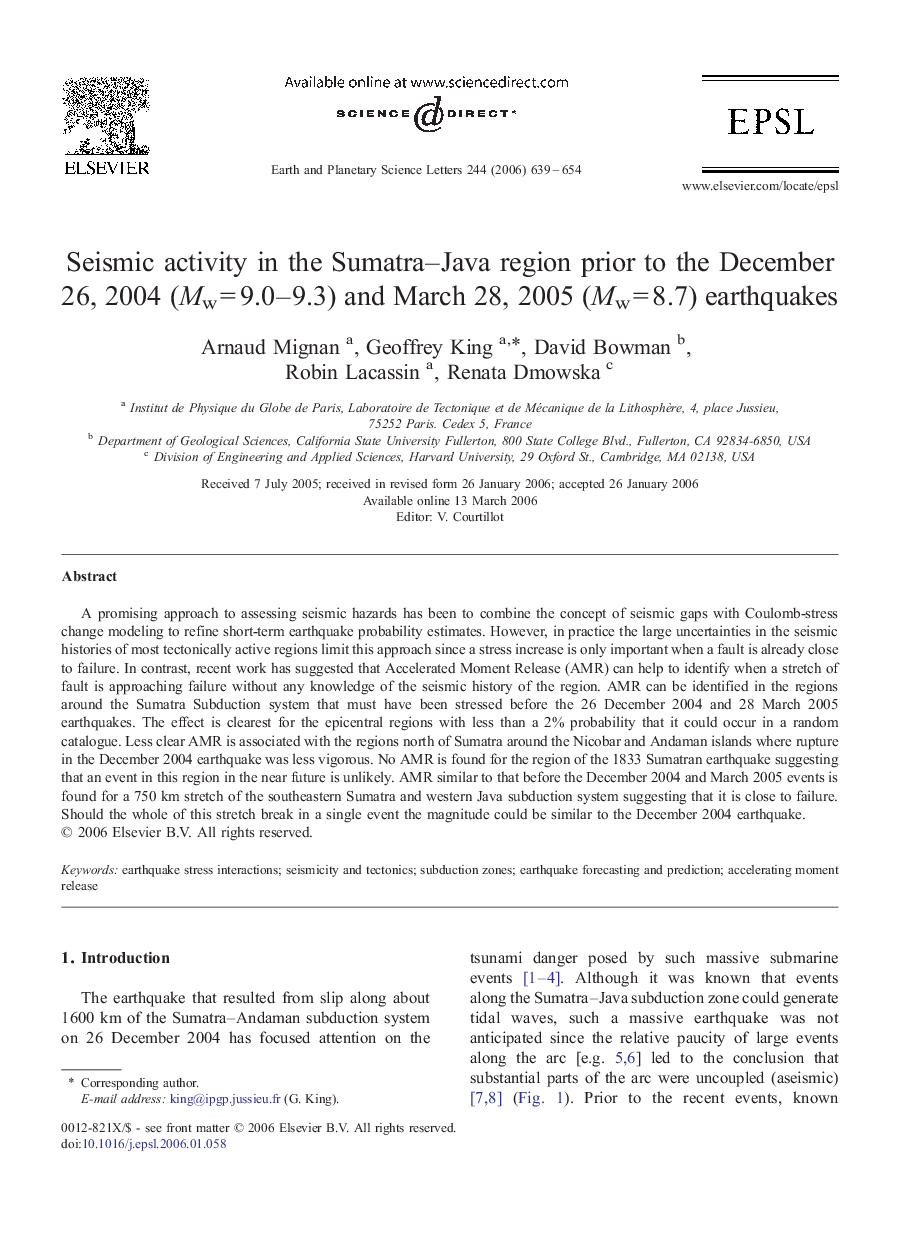| Article ID | Journal | Published Year | Pages | File Type |
|---|---|---|---|---|
| 4681038 | Earth and Planetary Science Letters | 2006 | 16 Pages |
A promising approach to assessing seismic hazards has been to combine the concept of seismic gaps with Coulomb-stress change modeling to refine short-term earthquake probability estimates. However, in practice the large uncertainties in the seismic histories of most tectonically active regions limit this approach since a stress increase is only important when a fault is already close to failure. In contrast, recent work has suggested that Accelerated Moment Release (AMR) can help to identify when a stretch of fault is approaching failure without any knowledge of the seismic history of the region. AMR can be identified in the regions around the Sumatra Subduction system that must have been stressed before the 26 December 2004 and 28 March 2005 earthquakes. The effect is clearest for the epicentral regions with less than a 2% probability that it could occur in a random catalogue. Less clear AMR is associated with the regions north of Sumatra around the Nicobar and Andaman islands where rupture in the December 2004 earthquake was less vigorous. No AMR is found for the region of the 1833 Sumatran earthquake suggesting that an event in this region in the near future is unlikely. AMR similar to that before the December 2004 and March 2005 events is found for a 750 km stretch of the southeastern Sumatra and western Java subduction system suggesting that it is close to failure. Should the whole of this stretch break in a single event the magnitude could be similar to the December 2004 earthquake.
